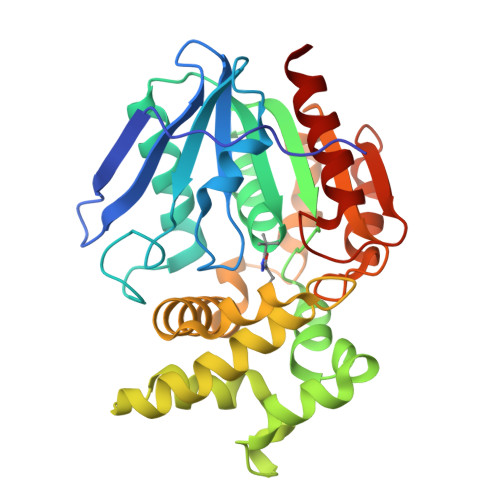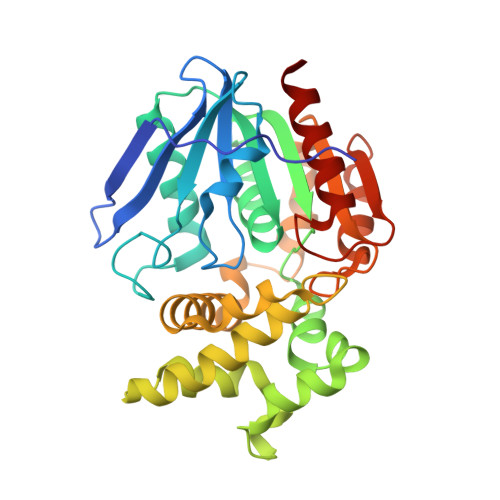Unusual extra space at the active site and high activity for acetylated hydroxyproline of prolyl aminopeptidase from Serratia marcescens
Nakajima, Y., Ito, K., Sakata, M., Xu, Y., Nakashima, K., Matsubara, F., Hatakeyama, S., Yoshimoto, T.(2006) J Bacteriol 188: 1599-1606
- PubMed: 16452443
- DOI: https://doi.org/10.1128/JB.188.4.1599-1606.2006
- Primary Citation of Related Structures:
1X2B, 1X2E - PubMed Abstract:
The prolyl aminopeptidase complexes of Ala-TBODA [2-alanyl-5-tert-butyl-(1, 3, 4)-oxadiazole] and Sar-TBODA [2-sarcosyl-5-tert-butyl-(1, 3, 4)-oxadiazole] were analyzed by X-ray crystallography at 2.4 angstroms resolution. Frames of alanine and sarcosine residues were well superimposed on each other in the pyrrolidine ring of proline residue, suggesting that Ala and Sar are recognized as parts of this ring of proline residue by the presence of a hydrophobic proline pocket at the active site. Interestingly, there was an unusual extra space at the bottom of the hydrophobic pocket where proline residue is fixed in the prolyl aminopeptidase. Moreover, 4-acetyloxyproline-betaNA (4-acetyloxyproline beta-naphthylamide) was a better substrate than Pro-betaNA. Computer docking simulation well supports the idea that the 4-acetyloxyl group of the substrate fitted into that space. Alanine scanning mutagenesis of Phe139, Tyr149, Tyr150, Phe236, and Cys271, consisting of the hydrophobic pocket, revealed that all of these five residues are involved significantly in the formation of the hydrophobic proline pocket for the substrate. Tyr149 and Cys271 may be important for the extra space and may orient the acetyl derivative of hydroxyproline to a preferable position for hydrolysis. These findings imply that the efficient degradation of collagen fragment may be achieved through an acetylation process by the bacteria.
Organizational Affiliation:
Graduate School of Biomedical Sciences, Nagasaki University, Nagasaki 852-8521, Japan.



















